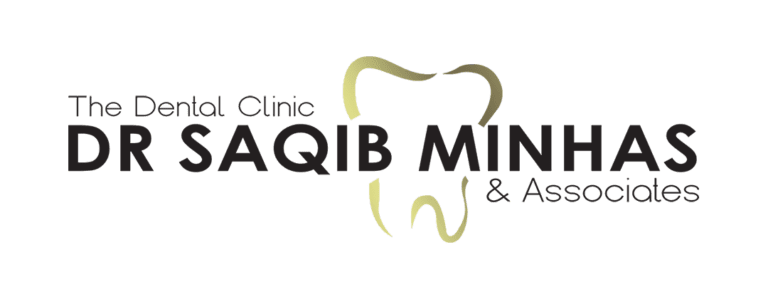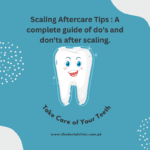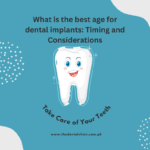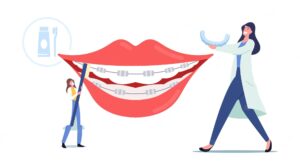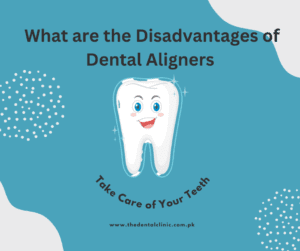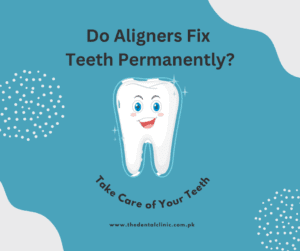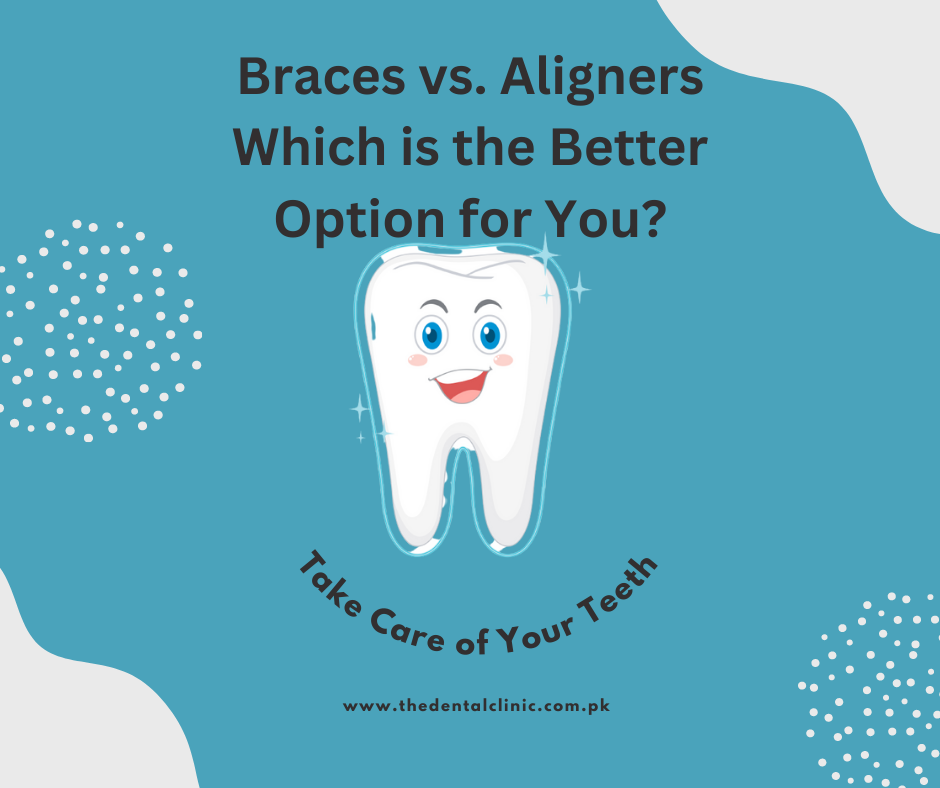
There are numerous varieties of orthodontic treatment. The optimal treatment for you depends on the nature of your condition. The initial step in any treatment is to determine the current position of your teeth and how they are likely to shift over time. This typically entails taking X-rays, plaster models, and photographs of your teeth. Then, you will be provided with a treatment plan. This may suggest multiple potential solutions to your problem. Discuss your options with your orthodontist.
Orthodontic appliances
The position of teeth is corrected by orthodontic appliances. The four primary types consist of:
- Fixed braces – these consist of brackets bonded to the front of each tooth and connected by wires.
- Removable braces – these are typically plastic plates that cover the roof of the mouth and clip to certain teeth and can only be used to achieve very limited tooth movement.
- Functional appliances – these involve a pair of removable plastic braces that are joined or designed to interact with each other and fit on the upper and lower teeth.
- Headgear – this is not an orthodontic appliance, but it can be used with other orthodontic appliances and is typically worn at night.
In more severe cases, jaw movement surgery may be combined with orthodontic appliances. This is a hospital-based treatment.
The focus of this discussion is the difference between braces and aligners. Let us give you a brief overview of things before diving into detail.
Both braces and aligner treatment realign your teeth and guarantee proper function. The debate between which one is better is an ongoing debate. There are pros and cons for both. While the convenience of aligners is undeniable, for some orthodontic issues, traditional braces may be the superior option. Here is a brief overview on how braces and aligners are similar and different.
How are braces and aligners similar?
Although braces and aligner treatments appear and feel different, they share many similarities. Both aligners and braces are effective for correcting crooked teeth, overbites, underbites, and jaw position. The average treatment duration for braces or Invisalign is approximately 16 months. Braces and aligners both must be worn throughout the day. Invisalign trays, however, can be removed during meals. Both require adherence to instructions regarding wear, cleaning, and oral health.
How are braces and aligners different?
The primary difference between aligners and braces treatment is the shifting technique used to create a beautiful smile. During orthodontic treatment, metal brackets and high-tech wires are placed within the mouth to realign the teeth. In this process, elastics are frequently used to bring teeth into alignment. In the case of aligners, a series of clear, custom-made aligning trays are employed to move teeth and these trays are replaced on a weekly basis.
Now that we have gone over a brief overview of what braces and aligners are, let us delve into more detail about the specifics of both.
What are braces?
Braces are orthodontic tools used to assist in the correction of dental issues such as crowding, crookedness, and misalignment. As you wear braces, your teeth gradually become aligned and straightened. Some people get braces to correct their smiles, whereas others get them to correct their bite, i.e., a misaligned bite (an underbite or overbite).
How do braces work?
Braces work by applying constant pressure to your teeth for extended periods of time. Your jaw gradually adapts to conform to this pressure. We tend to think of our teeth as being directly connected to our jawbone, which makes it difficult to imagine how they can be moved. However, beneath your gums is a membrane surrounded by bones that connects your teeth to your jaw. This membrane regulates the position of your teeth and reacts to the pressure exerted on them by braces.
How many types of braces are there?
When it comes to brace types, your orthodontist will recommend the types of braces best suited for you based on several factors, including your age and whether you have an overbite in addition to crooked teeth. Braces are custom-made and tailored to everyone’s needs.
There are four main types of braces currently available:
1. Metal braces:
Metal or traditional braces are the most common type of braces worldwide and have been around for over 100 years now. In the past, braces were very noticeable and bulky. Thankfully, braces today are not the same as they were one hundred years ago. Innovation and technological progress have made braces:
- Smaller
- Faster
- More convenient
Braces are applied to the teeth and connected by a wire. The wire is attached to the braces with elastic ties, which are available in a variety of colors. Every 4-8 weeks, the orthodontist will make adjustments to the wire in order to move the teeth.
In contrast to invisible aligner treatments such as Invisalign, some patients prefer metal braces because they do not need to remind their children to wear them. However, metal braces necessitate care and maintenance, and good oral hygiene is required throughout treatment.
2. Ceramic braces:
Ceramic braces are made of transparent, tooth-colored ceramic material. They function similarly to metal braces but are more discrete and less noticeable. Ceramic braces are most popular among patients who do not believe aligners or lingual braces are the best option for them but still want to straighten their teeth discretely and affordably. These patients are typically adolescents and adults with a focus on appearance.
Ceramic braces are less noticeable than metal braces and offer an affordable alternative to metal braces. However, you should be aware that these braces are slightly larger than metal braces and can stain based on your diet and brushing habits. They are not for everyone, but we still consider them a valuable orthodontic instrument.
3. Self-ligating braces:
Self-ligating braces work similarly to metal and ceramic braces and are available in metal or clear/ceramic material. They utilize braces and a wire to reposition the teeth. Self-ligating braces differ from metal or ceramic braces in that they use doors or clips instead of elastic rubber ties to hold the wire in place.
We have discovered that the adjustability of self-ligating braces results in slightly shorter appointment times. They are therefore a good choice for:
- Patients with a heightened pain threshold
- Patients who cannot sit still in the dental chair for very long
- Patients with developmental delays and orthodontic need
4. Lingual braces:
Lingual braces are the most specialized and rarest orthodontic system available on the market. This is because they require a unique set of orthodontic skills that few orthodontists take the time to develop. Behind-the-teeth lingual braces are not taught during orthodontic training, so it is up to the orthodontist to become proficient with them.
Lingual braces offer benefits that no other type of braces can match. These include complete invisibility, complete customization to the patient’s unique teeth, and enhanced efficiency and adaptability in certain patients. Lingual braces, which are placed behind the teeth, are ideal for adults who do not want noticeable braces but have complex orthodontic needs. We have also observed an increase in the popularity of behind-the-teeth braces among adolescents who are aesthetic-minded.
Although lingual braces offer numerous benefits, there are a few things you should know before committing to them. Because lingual braces are placed behind the teeth, some patients experience minor speech changes (lisps are common) and tongue irritation. As your mouth adjusts to the new orthodontic appliances, these symptoms typically disappear after a few weeks.
Pros and cons of braces
PROS
Straightening teeth, boosting self-esteem, and preventing gum disease are just a few of the benefits of braces. Here are some examples:
– Straight and beautiful teeth
Straight teeth are one of the primary reasons patients opt for braces. They enable you to achieve a beautiful, healthy smile that you can flaunt. They are both aesthetically pleasing and beneficial to oral hygiene. While straight teeth prevent tooth decay, gum disease, and other periodontal diseases, crooked teeth increase the likelihood of periodontal diseases. Maligned and crooked teeth trap food particles that attract bacteria. Additionally, cracks and crevices make brushing and flossing difficult. On the other hand, properly aligned teeth facilitate brushing and cleaning of all surfaces.
– Save time and money
Early orthodontic treatment reduces the risk of dental diseases caused by misaligned teeth. In some instances, bacteria from crooked teeth begin to erode the bone beneath the teeth. This can result in the development of serious dental problems. However, braces can save time and money that would have been necessary to correct orthodontic issues.
– An effective treatment option
Braces are an effective way to straighten teeth and have helped people smile with assurance for decades. There are numerous options from which to choose. Your dentist can assist you in choosing the option that best meets your needs. Metal braces are made from stainless steel of the highest quality. These are readily apparent when you smile. To make them less noticeable, however, various hues can be utilized. Ceramic braces that match the color of the teeth are another option.
– Permit correct chewing
It is difficult for patients with jaw misalignment to properly chew their food. This can cause digestive issues. By properly aligning your teeth, braces help to correct this issue. Thus, making it easier to effectively chew and digest food.
CONS
Although the benefits of getting braces outweigh the disadvantages, there are a few things to consider.
– Limited food selection
Certain foods must be avoided while wearing orthodontic appliances, which is one of their disadvantages. Patients will be provided with a list of foods they are prohibited from consuming. Hard and sticky substances, such as nuts, raw vegetables, candies, gum, etc., are typically the most problematic. Therefore, they must be avoided. Patients must adjust their way of life and eating habits, which may become uncomfortable over time.
– Painful initial experience
Since orthodontic braces have attachments that go on the front of each tooth, they can be painful to wear for the first time. Additionally, braces are tightened with a metal wire that applies force to the teeth. This can cause discomfort and soreness over time. Additionally, metal brackets may irritate the tongue and lips.
– Require vigorous maintenance
It is difficult to clean and maintain metal braces. Due to the necessity of brushing and flossing around the wire to reach between the teeth, cleaning can become challenging.
Aligners
What are aligners?
Clear aligners are an alternative to conventional braces and are intended to guide teeth into the correct position. Clear aligners utilize a gradual force to control tooth movement, much like braces, but without metal wires or brackets. Aligners are made of durable plastic and are custom-made for each individual’s mouth. If a series of aligners are required, each aligner gradually shifts the teeth into the desired position. To achieve the desired maximum effectiveness, aligners must be worn for at least 20 hours a day. Each aligner is worn for three weeks before being replaced. The duration of treatment with aligners is determined by the severity of each individual case. Typically, the duration of aligner treatment ranges from three weeks to six months. In comparison to traditional braces, aligners offer a significantly shorter treatment time.
How do aligners work?
By applying gentle pressure to your teeth, aligners are designed to make incremental adjustments. This force is transmitted to the jaws via the roots of the teeth. Your jawbone responds to forces by essentially repositioning the sockets, and your teeth accompany it. The treatment with aligner technology is typically gentle and comfortable because the changes between aligners are minor.
Throughout the course of treatment, a number of aligner trays are necessary to achieve the desired tooth position. With the aid of 3D scans of your teeth and jaws, a set of aligners is manufactured. Each aligner tray applies a light force to the teeth. Consequently, the physical positions of your teeth will change and improve. After each minor movement is accomplished by an aligner, you will proceed to the next aligner tray, which will bring about additional movements. This will continue until your teeth have completed invisible aligner treatment in Karachi and your smile is enhanced.
Pros and Cons of Aligners
Let us examine the benefits and drawbacks of aligners so that you can determine if they are the right choice for you.
PROS
- They are aesthetically pleasing. This is a common justification for selecting aligners over traditional braces. These aligners are significantly less noticeable than braces’ wires and brackets.
- They can be removed. If needed, you can physically remove the aligner from your mouth.
- They are convenient in terms of teeth-cleaning convenience. By removing the aligner, you can floss and brush your teeth without having to maneuver around wires and brackets. This can also improve your periodontal health by reducing the amount of bacteria lurking around your teeth and gums.
- They present fewer potential difficulties. Many individuals with traditional braces have experienced a broken bracket or wire, necessitating an emergency visit to the orthodontist. With clear aligners, you will not face this potential issue.
CONS
- They are less effective for complex issues. Aligners are more effective for individuals whose teeth require only specific types of movement. For more complicated conditions, your physician may suggest an alternate treatment option. In addition, if you have bridgework on any of your teeth, Invisalign may not be the best option.
- They require compliance. To obtain the maximum benefit from aligners, they must be worn for 20 to 22 hours per day. If you believe you will be tempted to remove them more frequently, this may not be the best option for you.
- They must be removed before eating and drinking. When eating or drinking, it is necessary to remove the aligners. If you do not, food or liquid can enter them. This results in the growth of bacteria along the teeth or gumline, which can lead to cavities. Also, liquid can seep into the aligners and stain your teeth and aligners.
- They come with food restrictions. You may experience tooth discomfort after removing the aligner, limiting your food options, hard foods, in particular, which should be avoided.
Aligners vs Braces: Points of Comparison
– Appearance
In terms of appearance, aligners are less noticeable than braces because they are transparent and customized to fit your teeth. This may be a factor for most patients, but not all.
– Comfort
When it comes to comfort, in most instances, aligners are more comfortable than braces. Although the teeth may still be somewhat sensitive as they begin to shift, the plastic aligner is typically less irritating to the lips and cheeks than metal or porcelain braces. This may be especially pertinent for athletes who participate in contact or semi-contact sports.
– Effectiveness
Most cases can be treated by aligners, but not all. In more complicated cases, your orthodontist may recommend braces over aligners. If you insist on using aligners regardless, the outcome may not be as precise.
– Cost of treatment
In some instances, aligners can be more expensive than braces. However, in many instances their costs are comparable or identical. Before you decide, your orthodontist can discuss the costs of your available options.
FAQS
– Which option is more painful, braces or aligners?
Aligners are significantly less painful than metal braces.
– Can I eat anything I want with braces or aligners?
In a broader sense, yes, you can, however, there are some restrictions. In the case of braces, it is best to avoid soft and sticky foods. In the case of aligners, it is wise to not consume hard foods.
– Can I play sports with braces or aligners?
Yes, you can play any sport with braces or aligners.
– How often do I need to see the orthodontist with braces or aligners?
Typically, you are required to pay a visit to the dentist at least once every 6 weeks.
– Will braces or aligners affect my speech?
During the first few days of treatment, you will initially experience a slight lisp. However, the discomfort should subside as your mouth adjusts to the braces.
Conclusion
In the quest for a straighter, more confident smile, the age-old question persists: are braces or aligners better? After exploring the advantages and considerations of both orthodontic options, the answer ultimately hinges on individual needs and preferences.
In the end, the “better” option is the one that aligns with your unique dental situation, lifestyle, and personal comfort. It’s a decision best made in consultation with your orthodontist, who can expertly assess your needs and recommend the most suitable treatment plan. Whichever path you choose, the destination remains the same – a healthier, more beautiful smile that lasts a lifetime.
